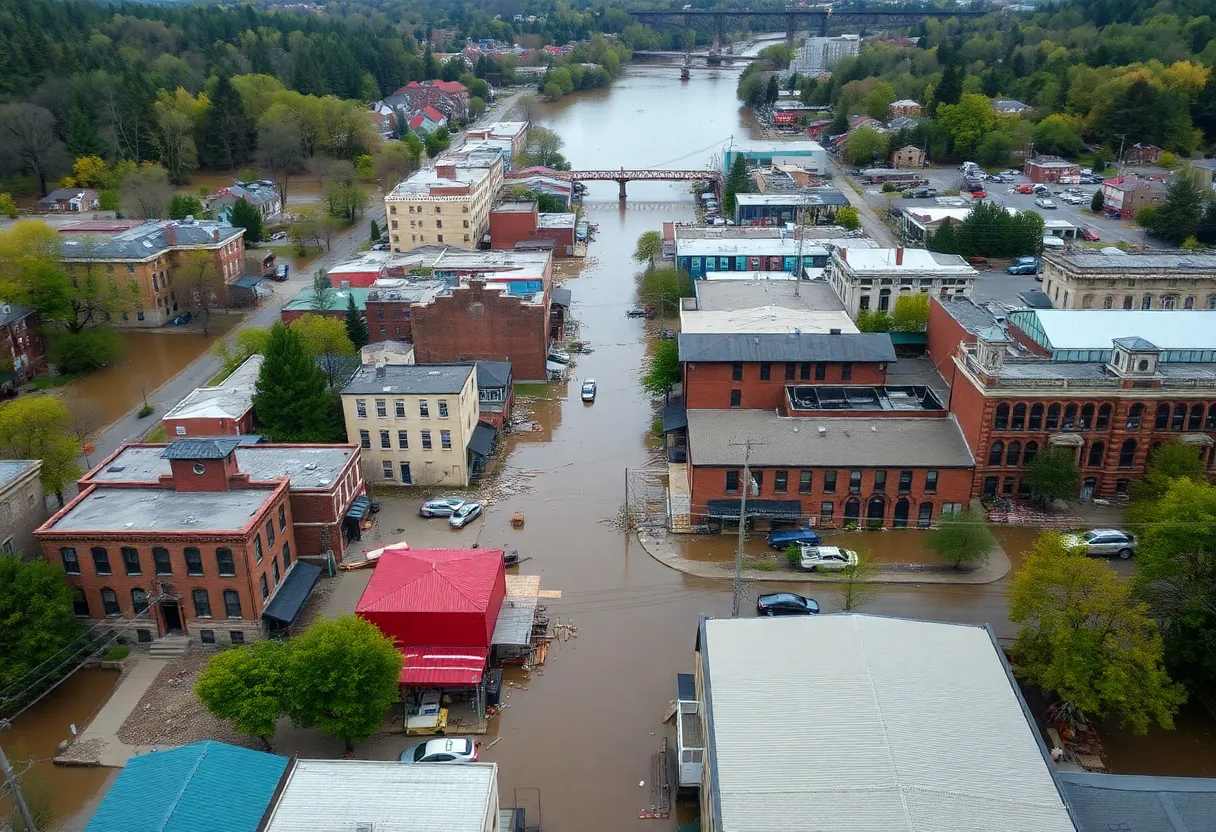News Summary
Asheville, North Carolina, is starting to recover from the devastation caused by Hurricane Helene, which resulted in historic flooding, significant fatalities, and billions in damages. Although the downtown area mostly escaped severe flooding, the River Arts District saw immense destruction. Recovery efforts are underway, with local businesses reopening and a focus on community support, especially for those impacted mentally and economically by the storm.
Asheville, North Carolina Begins Recovery After Hurricane Helene’s Devastating Floods
Asheville, North Carolina, is beginning to recover from the catastrophic effects of Hurricane Helene, which struck on September 27, unleashing historic flooding and causing extensive damage throughout the region. The storm resulted in the deaths of 221 individuals across the Southeast, with 106 fatalities reported in North Carolina alone, marking it as one of the deadliest storms in U.S. history, comparable to Hurricanes Katrina and Maria.
The economic toll from Hurricane Helene is staggering, with damages estimated at $60 billion. However, some analyses suggest that when accounting for lost wages and broader economic impact, the total could exceed $200 billion. Aerial footage captured after the storm showed remarkable flooding that affected areas beyond the expected shorelines, highlighting the storm’s significant inland destruction.
Asheville residents initially faced severe communication challenges; cutting them off from the outside world. The downtown area, built on a hill, largely escaped the worst flooding, allowing places like the Moxy Asheville hotel, which had just opened two weeks before the storm, to offer Wi-Fi services to locals trying to reach loved ones amidst disrupted phone services.
Post-Storm Conditions and Immediate Recovery Efforts
Asheville endured a staggering 53 days without access to potable water, complicating recovery efforts. While some neighborhoods have begun to reopen, areas such as Swannanoa and Chimney Rock remain inaccessible to visitors as they continue to recover. The River Arts District (RAD) suffered immensely during the storm, with estimates indicating that two-thirds of the district’s buildings were either damaged or destroyed, pushing numerous artists to watch their creations and equipment swept away by floodwaters.
Particularly affected was the lower part of the RAD, where up to 80% of structures were reported as damaged or destroyed. However, as recovery progresses, artists in the Upper RAD have begun to reopen galleries, with local collectives offering support to displaced artists. The Radical Hotel, notable as the only hotel in the RAD, managed a reopening in January and has since gained recognition as the No. 2 best new hotel in the U.S.
Impact on Local Economy and Tourism
The effects of the storm rippled through the local economy, particularly during October, a critical month for tourism since it coincides with the peak of fall foliage in the region. The Wrong Way River Lodge, affected by the flood, successfully resumed operations by December 31. Meanwhile, the Biltmore Estate also experienced some flooding but was able to quickly reopen, demonstrating resilience in local tourism.
Restaurants and bistro dining locations, such as Bull and Beggar, have reopened after undergoing repairs, with local chefs eager to promote seasonal ingredients sourced from the area. The James Beard Foundation’s decision to host its annual Chef Action Summit in Asheville further emphasizes the city’s culinary strength and resilience.
Community Responses and Support
Despite the progress, many local businesses continue to grapple with challenges, and some have sadly closed their doors for good. The tourism industry remains a crucial component for their recovery. On the educational front, schools in Buncombe County have resumed classes, placing a significant focus on mental health support for students affected by the trauma of the storm. Schools are implementing modifications to curricula to enhance social-emotional learning and provide necessary resources for families in distress.
As local leaders and community members mobilize their efforts, the spirit of Asheville is beginning to rebuild, focusing on recovery and unity in the face of overwhelming adversity.
Deeper Dive: News & Info About This Topic
HERE Resources
East Fork Pottery Innovates Amidst Crisis in Asheville
Asheville’s Ongoing Recovery from Hurricane Helene
Minimal Impact of Hurricane Helene on Black Bears in Asheville
Asheville Firefighters Heroically Rescue Man from Sinking Car
Three Women Go Missing in Asheville, North Carolina
North Carolina Breweries Shine at World Beer Cup
Asheville Prepares for Record-Breaking Heat and Severe Weather
Asheville Resilience Shines Through After Hurricane Helene
Asheville Faces Funding Cuts to Public Radio Stations
Increased Human-Bear Conflicts After Hurricane Helene
Additional Resources
- AJC: Asheville After the Flood
- CNN: Hurricane Helene’s Impact on Schools
- NBC News: Asheville Biltmore Village Recovery
- WLOS: Asheville City Council Review Action Plan
- WBIR: 96 Hours in Asheville Recovery
- Wikipedia: Hurricane Helene (2023)
- Google Search: Asheville Hurricane Helene






